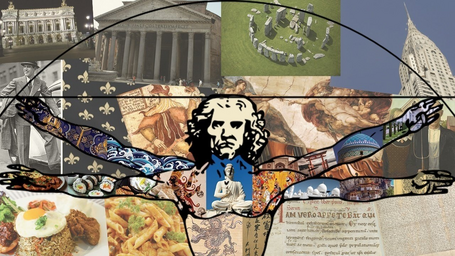“Difference is of the essence of humanity. Difference is an accident of birth and it should therefore never be the source of hatred or conflict. The answer to difference is to respect it. Therein lies a most fundamental principle of peace: respect for diversity.”
The above quote by John Hume offers an insight as to what I wish to put forward today. Some words of importance in the era we live, and the importance of being cognizant of the differences that exist between all of us. I’ll be exploring some concepts that could help us quantify how we feel about culture as a whole, what it is, and why understanding its nuances is of immense importance.
What’s the first thing that comes to mind when we bring up the term ‘culture’? For a lot of us, there would be a rush of negative feelings stemming from the use of the word as a means to restrict and silence our liberty in the name of conformity. Culture entails the norms of society entrenched into our consciousness. We live and breathe the culture that has been passed down to us through the previous generation, while at the same time picking up new ways of life due to the advent of eased communication through the internet. Now, these norms are never binary wrong or right; rather, they represent the context of life in the area at the time and eventually form the identity of the people itself. In a way, it’s what makes similar individuals unique. There are inherent nuances that make cultures differ, right down to the little phrases used in the prevalent language. These nuances are often viewed through a biased lens by an outsider, which contributes further to the mess we currently find ourselves in.
Now culture as a whole may seem like a vague concept, tough to quantify, but plenty of dedicated anthropologists through the times have discovered methods to sharply differentiate between the lot of us, rather scientifically and backed by empirical data. Edward Hall was one of those individuals, credited with coming up with the concept of ‘high’ and ‘low’ context communication. This entailed the specificity with which a culture would communicate; how much information is conveyed through literal sentences and not gestures or hidden signals. As you could guess, Indians aren’t a very blunt bunch, so we fall under high context communicators whereas you could call, say, the Germans low context and straightforward. Another pioneer was Geert Hofstede, who, after decades of painful research done on data collected from IBM employees around the world, came up with the concept of cultural dimensions. Bear with me here; I’ll eventually link these discoveries to the matter of importance I wish to stress upon. These dimensions include terms such as power distance or perception, or the way society treats hierarchies as rigid or non-existent, as well as the idea of individualism or collectivism of culture and how that affects decision making, thus affecting the overall productivity of a task. Through these dimensions, we could quantify cultural differences and put a finger on how we treat intercultural communication. Even the very minuscule details in language could cause miscommunications. For example, the United States and Britain, while sharing a common tongue, have different meanings for the same phrases, e.g., the phrase “knock you up” has very different meanings across the Atlantic.
While the previous example is an amusing and harmless miscommunication or misinterpretation of cultural communication, the context in which our value systems are set up was very efficiently described by the previously mentioned cultural dimensions which tie into something more serious. These little details set up the entire value system that a culture adheres to, which in turn forms a larger social identity of a group of people, which is expressed most generally. These include the culture’s food habits, family interactions, interaction with strangers, attitude towards nature, so on and so forth. This particular identity defines a culture based on their perception formed outside their sphere of influence and hence may seem odd or different to other cultures as they face the unknown. This, in turn, in many cases leads to mild (and sometimes extreme) xenophobia, best exemplified by the current global pandemic where multiple xenophobic slurs and attacks were targeted at Asians, purely due to their food habits.
When value systems clash between cultures, acceptance on either side is a difficult task. My aim here was to showcase that the differences in culture have a lot more context behind the face value of practices, and there is no inherent right or wrong in any culture, once we put in a filter of not condoning mental or physical harm to individuals. Therefore, in today’s polarizing world, it is of utmost importance to acknowledge those differences in values and offer acceptance towards a foreign experience.


